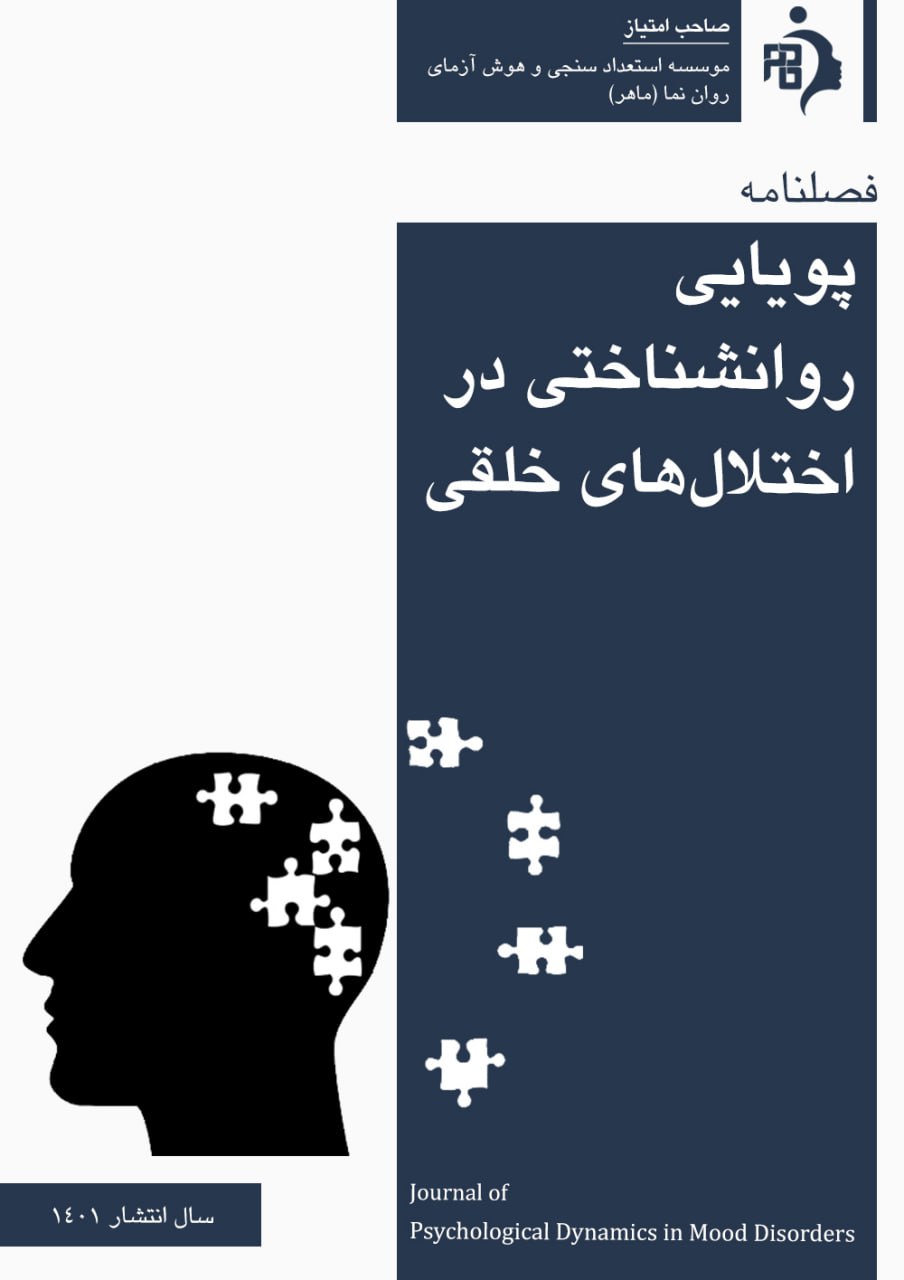نقش تجارب آسیبزای دوران کودکی، سبکهای اسنادی و شرم درونی شده در پیشبینی افکار خودکشی دانشجویان
کلمات کلیدی:
افکار خودکشی, تجارب آسیبزای دوران کودکی, سبکهای اسنادی, شرم درونی شدهچکیده
زمینه و هدف: خودکشی، یکی از مسائل جدی و مهم در حوزۀ سلامت روان دانشجویان است. بنابراین شناسایی عوامل خطر مؤثر در خودکشی دانشجویان میتواند زمینه لازم را برای اعمال مداخلات مناسب با هدف پیشگیری و کنترل پدیده خودکشی فراهم نماید. هدف این پژوهش، تعیین نقش تجارب آسیبزای دوران کودکی، سبکهای اسنادی و شرم درونی شده در پیشبینی افکار خودکشی دانشجویان بود.
مواد و روش: این مطالعه با توجه به هدف از نوع بنیادی و از لحاظ شیوه گردآوری دادهها توصیفی-همبستگی بود. جامعه آماری شامل دانشجویان دانشگاه تبریز در نیمسال تحصیلی اول 1402-1403 بود که از بین آنها، ۳۷۶ نفر به روش نمونهگیری خوشهای چندمرحلهای انتخاب شدند. ابزارهای پژوهش شامل مقیاس افکار خودکشی (بک،1979)، پرسشــنامه ترومای کودکی (برنشتاین و همکاران،2003)، پرسشنامه سبکهاي اسنادي (پیترسون و همکاران،1982) و مقیاس شرم درونی شده (کوک، 1993) بود. دادهها با استفاده از نرمافزار SPSS نسخه ۲۷ و روش تحلیل رگرسیون چندگانه همزمان تحلیل شدند.
یافتهها: نتایج نشان داد که بین تجارب آسیبزای دوران کودکی (آزار عاطفی، آزار جنسی، آزار فیزیکی، غفلت عاطفی، غفلت جسمی)، سبک اسنادی منفی و شرم درونی با افکار خودکشی، همبستگی مثبت و معنیدار و بین سبک اسنادی مثبت با افکار خودکشی، همبستگی منفی و معنیدار وجود دارد (P<0.01). همچنین، تحلیل رگرسیون نشان داد که تجارب آسیب زای دوران کودکی، سبکهای اسنادی و شرم درونی شده، پیش بینی کننده معنادار افکار خودکشی دانشجویان هستند (P<0.01).
نتیجهگیری: تجارب آسیبزای دوران کودکی، سبکهای اسنادی و شرم درونی شده بهعنوان عوامل پیشبینی کننده مهم در افکار خودکشی دانشجویان مطرح هستند. پیشنهاد میشود که روانشناسان و متخصصان جهت کاهش افکار خودکشی دانشجویان نقش این متغیرها را مورد توجه قرار دهند.
دانلودها
مراجع
Abbasi Abrazgeh, Mozhgan, Zargham Hajbi, Majid and Aghayousfi, Alireza (2022). The role of impulse control, rumination, and internalized shame in predicting the tendency to suicidal thoughts in adolescents referred to transient harm reduction centers in Tehran. Development of Psychology, 11 (9): 154-145. : DOI20.1001.1.2383353.1401.11.9.15.8
Abdi, Arzu and Sohrabi, Faezeh (2023). The effect of documentary styles and cognitive errors on suicidal tendencies among educated youth aged 20 to 35 referring to mental health centers. Knowledge and Research in Applied Psychology, 24(1), 68-79. https://doi.org/10.30486/jsrp.2021.1914660.2708
Anisi, Jafar, Fathi Ashtiani, Ali, Salimi, Seyed Hossein and Ahmadi Nodeh, Khodabakhsh (2004). Assessing the validity and reliability of the Beck Suicidal Ideation Scale (BSSI) in soldiers. Journal of Military Medicine, 7(1), 33-37.https://www.sid.ir/paper/62015/fa
Beck AT, WARD CH, MENDELSON M, MOCK J, ERBAUGH J. An inventory for measuring depression. Arch Gen Psychiatry. 1961 Jun;4:561-71. doi: 10.1001/archpsyc.1961.01710120031004
Beck AT, Steer RA, Ranieri WF. Scale for Suicidal Ideation: psychometric properties of a self-report version. Journal of ClinicalPsychology. 1988; 44(4): 499-505.
https://doi.org/10.1002/1097-4679(198807)44:4<499::AIDJCLP2270440404<3.0.CO;2-6
Bernstein DP, Stein JA, Newcomb MD, Walker E, Pogge D, Ahluvalia T, Stokes J, Handelsman L, Medrano M, Desmond D, Zule W. Development and validation of a brief screening version of the Childhood Trauma Questionnaire. Child abuse & neglect. 2003 Feb 1; 27(2):169-90. DOI:10.1016/S0145-2134(02)00541-0
Bunting L, McCartan C, Davidson G, Grant A, Mulholland C, Schubotz D, Hamill R, McBride O, Murphy J, Nolan E, Shevlin M. The influence of adverse and positive childhood experiences on young people's mental health and experiences of self-harm and suicidal ideation. Child Abuse Negl. 2023 Jun;140:106159. DOI: 10.1016/j.chiabu.2023.106159
Cook, D. R. (1993). Internalized shame scale manual. Menomonee, WI: Channel Press.
Diblasi, E, Kang, J, & Docherty, A. R. (2021). Genetic contributions to suicidal thoughts and behaviors. Psychological medicine, 51(13), 2148-2155. DOI: 10.1017/S0033291721001720.
Garrusi, B, & Nakhaee, N. (2009). Validity and Reliability of a Persian Version of the Childhood Trauma Questionnaire. Psychological Reports, 104(2), 509-516. https://doi.org/10.2466/PR0.104.2.509-516.
Hashmati, Rasool, Bayrami, Mansour and Nowrozi, Hossein (2023). The role of the lived experience of trauma in childhood and self-destruction on suicidal ideation: the mediating effect of emotional suppression. New Psychological Research Quarterly, 18(69), 118-121. :DOI20.1001.1.27173852.1402.18.69.5.8
Hashmati, A., Khakpour, S., Kothari, Z., Mohammad Y., M. and Zenouzian, S. (2019). Prevalence of suicide among students of Zanjan University of Medical Sciences. Behavioral Science Research, 17(1), 35-43files/site1/rds_journals/219/article-219-2431505.pdf.
Khameneh, Zahra & Hajebi, Majid & Jalali, Mohammad. (2023). Development of a suicidal tendency model in borderline personality disorder patients based on perceived burden and suicidal acquisition capacity through pessimistic attribution style. Journal of Adolescent and Youth Psychological Studies. 4. 99-109. DOI:10.61838/kman.jayps.4.9.11
Leboyer, M, Godin, O, Llorca, P, & Aubin, V. (2022). Key findings on bipolar disorders from the longitudinal Fonda Mental Advanced Center of Expertise-Bipolar Disorder (FACE-BD) cohort. Journal of Affective Disorders, 307(15), 149-156. DOI: 10 . 1016/j . jad . 2022 . 03 . 053 .
Lin, Yu-Chin & Wee, Janelle & Marks, Rocky & O'Connell, Katherine & Hassler, Molly & Law, Keyne. (2022). Shame-proneness and suicidal ideation: The roles of depressive and anger rumination. Journal of Affective Disorders Reports. 7. 100303. DOI:10.1016/j.jadr.2021.100303
Mousavi, Mehsa, Abul Qasimi, Abbas, Hajlo, Nader and Atadakht, Akbar (2022). Prediction of suicidal thoughts of depressed patients based on sense of coherence, brain-behavioral systems and attributional styles. Clinical Psychology Studies, 12(48), 109-135.https://doi.org/10.22054/jcps.2023.60895.2577
Rajabi, Gholamreza and Abbasi, Qadrat Elah (2010). Investigating the relationship between self-criticism, social anxiety and fear of failure with internalized shame in students. Educational and Psychological Studies, 1(2), 171-182.https://sid.ir/paper/204946/fa
Rogers, C. J, Forster, M, Sussman, S, Steinberg, J, Barrington-Trimis, J. L, Grigsby, T. J, & Unger, J. B. (2023). The impact of childhood trauma on problematic alcohol and drug use trajectories and the moderating role of social The mediating role of social support in the relationship between traumatic childhood experiences and Instagram addiction… support. International journal of environmental research and public health, 20(4), 2829. https://doi.org/10.3390/ijerph20042829
Schneider BH, Sanz Martinez Y, Koller SH, et al. Hopelessness and shame in relation to suicide attempts by Cuban adolescents. Transcultural Psychiatry. 2022;59(1):28-36. doi:10.1177/1363461520963924
Shapiro, L, Kennedy, K, Dimick, M, Benjamin, I. (2022). Elevated atherogenic lipid profile in youth with bipolar disorder during euthymia and hypomanic/mixed but not depressive states. Journal of Psychosomatic Research, 156(5), 76-84. DOI: 10.1016/j.jpsychores.2022.110763.
Smith, B, Hall, H. & Woolcock-Henry, C. (2000). The Effects of Gender and Years of Teaching Experience on Explanatory Style of Secondary Vocational Teachers. Journal of Vocational Education Research, 25(1), 19-23. Doi:10.5328/JVER25.1.24
Stagaki, Maria & Nolte, Tobias & Feigenbaum, Janet & King-Casas, Brooks & Lohrenz, Terry & Fonagy, Peter & Montague, Pendleton. (2022). The mediating role of attachment and mentalising in the relationship between childhood maltreatment, self-harm and suicidality. Child Abuse & Neglect. 128. 105576. DOI: 10.1016/j.chiabu.2022.105576
Taylor-Jones (2023) When Shame Becomes Deadly: The Relationship between Suicidality and Shame; a Personal Perspective, Psychological Perspectives, 66:2, 155-167, DOI: 10.1080/00332925.2023.2242019



























